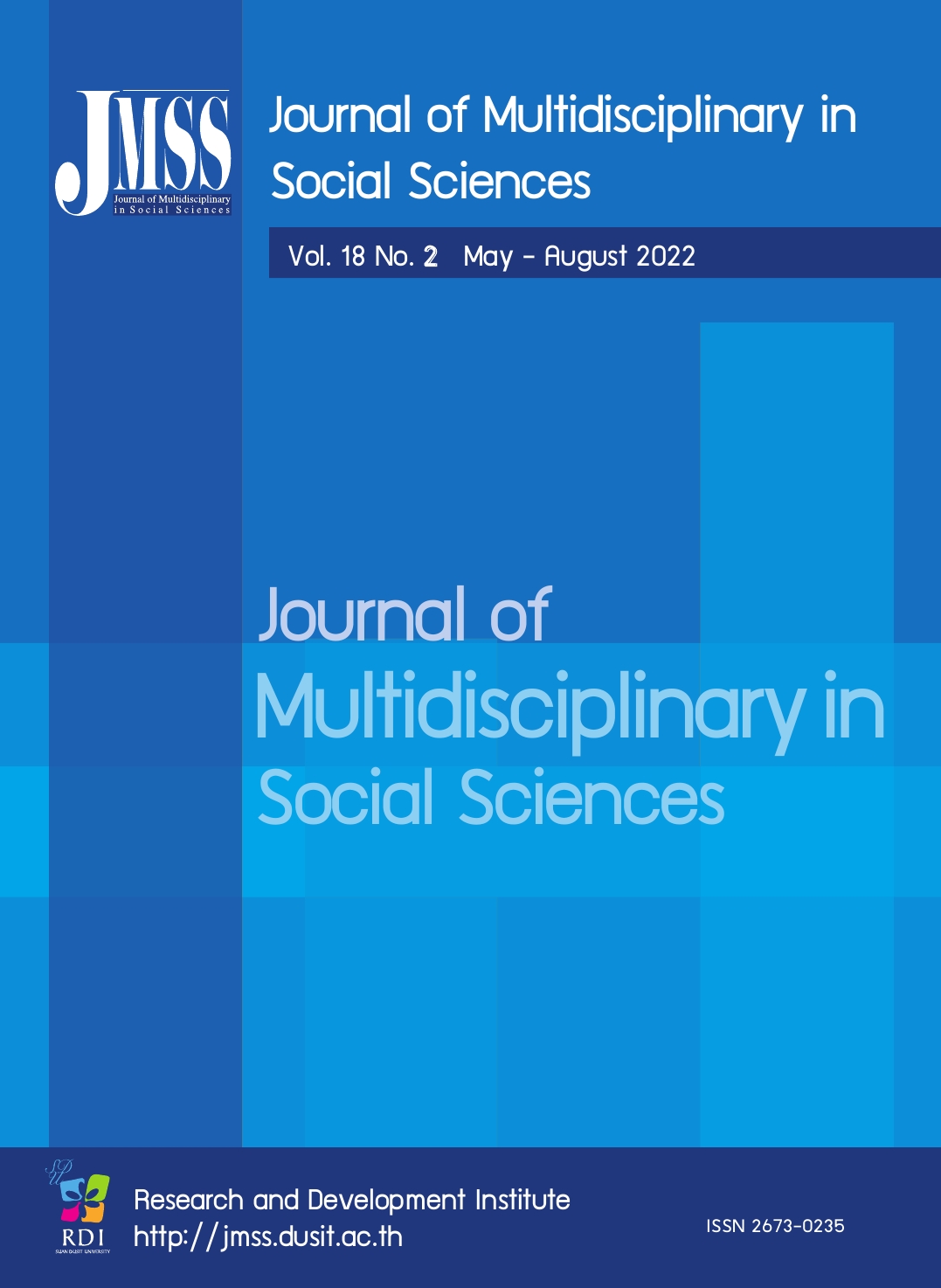Perspective of Women between Two Cultures in France in the 18 Century and China in the 20 Century from the Queen’s Confession by Vitoria Holt and the Good Earth by Pearl S. Buck.
Keywords:
Perspective of women, France, China, The Queen’s Confession, The Good EarthAbstract
The objective of this research was to study the perspective of women from the Queen’s Confession by Vitoria Holt and the Good Earth by Pearl S. Buck. The analytical method from two novels, the history, patriarchy concept and feminism concepts were implemented in this investigation. Analysis was conducted using four conceptual frame works: the women's role, women’s values, social disparity or inequality and other social factors. The results found that; 1) the concept of the women’s role, especially, the political bargaining can be seen in The Queens’s Confession, but in The Good Earth, the women were an exploitation tool for their family. In regard to being a follower; the two novels had similar ideas in the “arranged marriage”. Moreover, in the genealogy aspect, the women of the two novels had the same status in order to produce heirs for the male’s family and taking care of the family. 2) with the women’s values aspect, it was obviously found in the Queen’s Confession, especially the main characters were bullied regarding ethnic issues. But in the Chinese society under the concept of “the body under an orchestration”, can be initiated from the women, who were suffering in a value of beauty such as foot binding. 3) In the concept of the social disparity; the women tyrannical by the social class and gender, can be found with the high and low social status of the woman. Also, in the concept of the women under the social pressure; the two novels had the same believes in the patriarchal concept. It is no great surprise that the man was also a big person of the family from the past until now. Lastly, 4) In the aspect of other elements of society that effect women; mainly in the moral and customary issues, it used to be a strong social frame to control the women of the two novels such as not being able to make decisions by herself, but only permitted women to function in the family role.
References
Ann, P. (1998). Chronicle of the Chinese Emperors. London: Thames & Hudson. Baker, M. (1978). French political thought at the accession of Louis XVI. The Journal of Modern, 12(3), 120-122.
Cornell University. (2020). Chinese Traditional Dress. Cornell University Library online exhibition. Retrieved from https://exhibits.library.cornell.edu/chinese-traditionaldress.
Grada, C. (2009). Famine: A Short History. Princeton, N.J. : Princeton University Press. Hunnicutt, G. (2009). Varieties of Patriarchy and Violence Against Women: Resurrecting “Patriarchy” as a Theoretical Tool. Violence Against Women Press, 15(5), 553-573.
Janku, A. (2001). The North-China Famine of 1876–1879: Performance and Impact of a Non-Event. Symposium in Honour of Rudolf G. Wagner on His 60th Birthday. Heidelberg, November 3rd–4th, 127–134.
Jensen, D. L. (1976). The World of Europe 1500 to 1815. Missouri: Forum Press. Julie, M. (2018). How Did the American Revolution Influence the French Revolution? Retrieved from https://www.history.com/news/how-did-the-american-revolutioninfluence-the-french-revolution
Lerner, G. (1986). The creation of patriarchy. New York: Oxford University Press.
Mac Kay, P. J. (1983). A History of Western Society. Boston: Houghton Muffin Company.
Nanta, Ch, and Ni-On, S. (1982). European History in 1494 – 1789. Bangkok: Thaiwatthanāphānit. Mark, A. and College. (2009). Gender and Negotiation: Some Experimental Findings from an International Negotiation Simulation. Ournal Article, 53 (1), 23-47.
Perrine, L. (1978). Story and Structure. New York: Harcourt Brace Jovanovich.
Richards, D. (1967). Modern Europe 1789-1945. London: William Clowes and Sons Ltd. Robert, B. (2011). The Scramble for China: Foreign Devils in the Qing Empire, 1832–1914.
London: Penguin. Robert, E & Jacob, H. (1995). Literature: An Introduction to Reading and Writing. (4th ed.). New Jersey: Prentice – Hall.
Sarah. A. Bendall, (2022). Remaking history: in hand-making 400-year-old corset designs. Australia: Australian Catholic University.
Shen, Y. (2011). China in the “Post-Patriarchal Era” Changes in the Power Relationships in Urban Households and an Analysis of the Course of Gender Inequality in Society. Retrieved from https://doi.org/10.2753/CSA0009-462543040
Songsomphanm, R. (2017). Perspective on Women in Russian Society from 1920-1972 in the Novel Mother by Maxim Gorgy. Master of Art Degree, Thammasat University.
Taru, S. (2020). Women in the French Revolution: From the Salons to the Streets: 4 Corners of the World. International Collection. The Library of Congress.
Teeradet, Ch. (2021). Introduction to Literature. Bangkok: Suan Dusit University.
Walby, S. (1990). Theorizing patriarchy. Oxford: Wiley-Blackwell.
Wikipedia. (2021). Foot Biding. the Free Encyclopaedia.
Downloads
Published
How to Cite
Issue
Section
License

This work is licensed under a Creative Commons Attribution-NonCommercial-NoDerivatives 4.0 International License.








